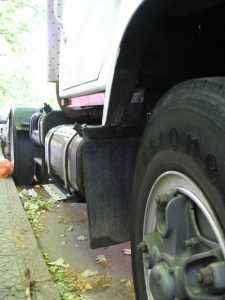Truck driver training is an important part of preventing trucking accidents in Homestead and other communities. Commercial truck drivers may be operating vehicles that weigh tens of thousands of pounds. These vehicles have many blind spots and in some cases may be used to transport hazardous cargo. For all these reasons, driving a truck can be more dangerous than driving a passenger car, and truck drivers are expected to abide by more rules and pass stricter driving tests. They are also expected to get adequate training to ensure that they can stay safe and keep other users of the roads safe.
Despite the many rules and regulations, each year some undertrained and underqualified drivers are hired and these drivers can put others at risk. Safety experts agree that truck carriers can do more to ensure that their truck drivers are safe on the roads. One thing that carriers and companies can do, for example, is to carefully screen potential employees. This can be done by:
1) Checking off and keeping a driver qualification (DQ) file.
This checklist summarizes driver qualifications and ensures that drivers have the right qualifications to drive big rigs or tractor trailers. A written checklist can ensure that employers check potential employees carefully.
2) Running background checks on drivers.
Background checks can uncover past driving violations and charges against a driver, even if these problems do not show up in official records or in a personnel file. One issue that affects the industry is that violations of rules are not always reported to truck carriers and are not always reported promptly, especially if they occur in other states. A thorough investigation may be the only way to uncover whether a driver has a history of unsafe driving.
3) Encourage additional training or in-company testing.
Another issue in the trucking industry has to do with fake commercial licenses. Fake licenses that have been paid for can be hard to detect. In-company testing and training can help address this problem by ensuring that drivers have the training and testing needed to show and hone their skills.
4) Use extra monitoring during initial hiring periods.
In the first few months after a new hire, carefully monitoring new drivers can help determine whether they are undertrained or whether they need additional training.
5) Get to know drivers personally.
In larger companies where truck drivers may rarely interact with management and employers, it can be harder to determine whether drivers are safe – until an accident happens. Building team spirit creates a better workplace and gives employers a chance to spot potential problems.
6) Use technology to keep track of drivers.
Cameras, electronic logs, and other technology can help truck carriers track fatigued drivers, distracted drivers, drivers who are speeding, and truckers who are violating the rules. Some of the technology today can be used to remove drivers from the road if they are driving dangerously.
Hiring safe and reliable drivers keeps the roads safer for everyone and can also help truck carriers avoid a lawsuit in the event of a crash. In the long run, an investment in safety means that truck carriers may face fewer losses from crashes as well as potentially lower insurance costs.
If you have been injured in a truck accident, you will want to determine whether a truck carrier took reasonable steps to ensure that their drivers are safe. If they did not, there may be multiple liable parties in your case. To find out more, contact Flaxman Law Group for a free case review.
 Florida Injury Lawyer Blog
Florida Injury Lawyer Blog


